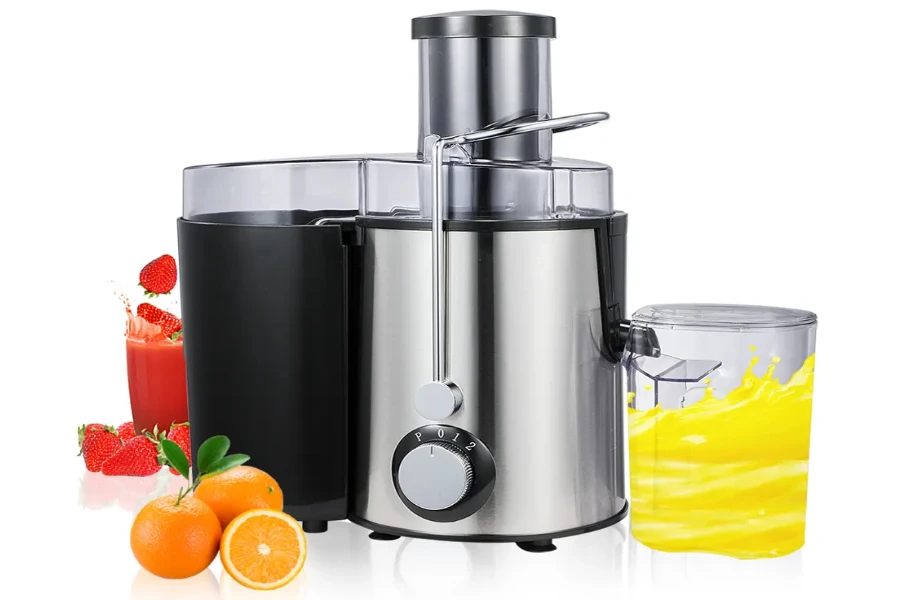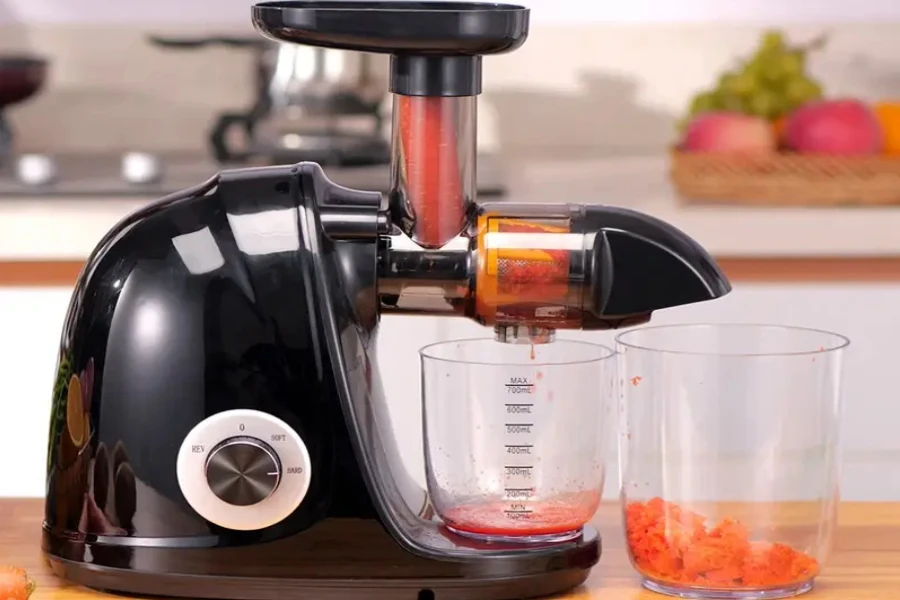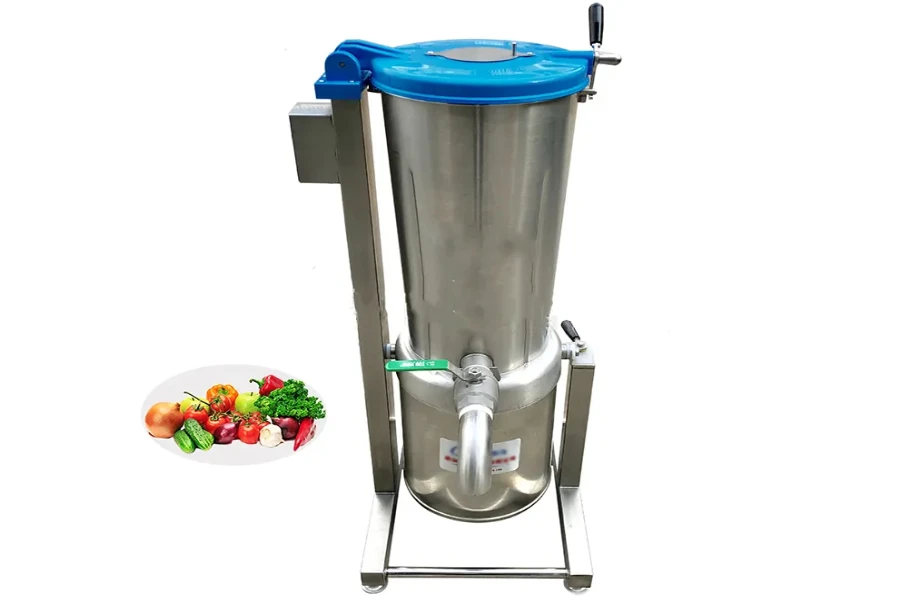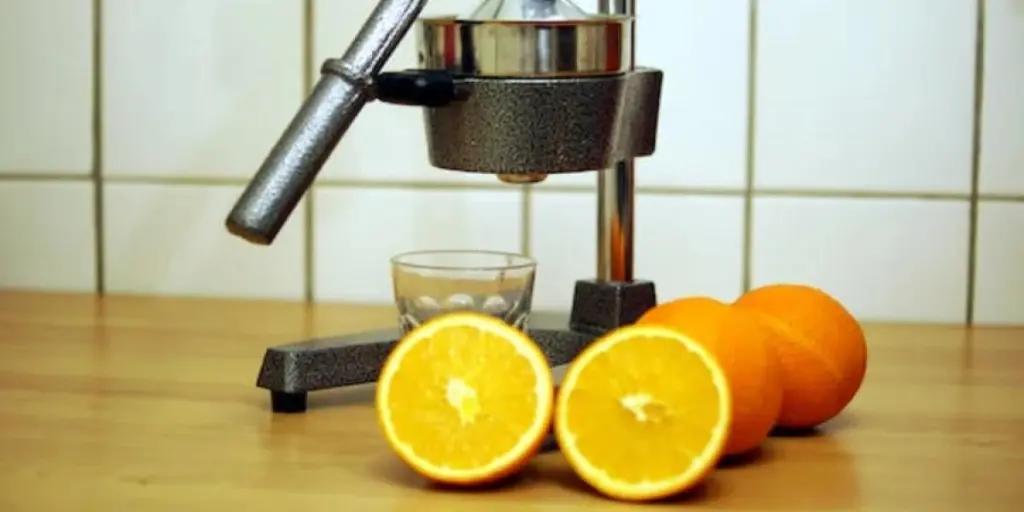As a business owner in the juice industry, selecting the right commercial juice extractor can make or break the success of your business. It can be overwhelming to navigate the various options available and make a choice that is both efficient and cost-effective.
In this step-by-step guide, we will cover everything you need to know before choosing a machine, including what factors to consider, the different types of extractors, and special features to look out for.
Table of Contents
Global market growth trends for commercial juice extractors
Tips to consider when buying a commercial juice extractor
Different types of commercial juice extractors
Conclusion
Global market growth trends for commercial juice extractors
The global commercial juice extractor market is expected to grow at a CAGR of 8.3% from 2022 to 2030, reaching a market size of US $3.67 million during the forecast period. The increasing demand for dietary and immunity-boosting juices, the rising trend of clean-label and organic juices, and the growing popularity of juice bars and cafes are some of the key factors driving the market growth. This demand is being met by an increasing supply of a wide range of highly advanced models, with Asia-Pacific dominating the supply market.
Tips to consider when buying a commercial juice extractor
Build
- Housing (plastic/ aluminum or steel)
The material used in the design of a commercial juice extractor is essential to its durability and performance. Stainless steel is known for its durability and resistance to corrosion, making it an ideal material for use in a commercial setting. It is also easy to clean and has a sleek and professional appearance. Other materials that may be used include aluminum, plastic, and glass, but these may not provide the same level of durability or performance.
- Pulp ejection system
Pulp ejection systems come in two predominant types: manual and automatic. Manual pulp ejection systems require the user to manually remove the pulp, which can be time-consuming and messy. Automatic pulp ejection systems are designed to automatically eject the pulp, making the process much quicker and easier.
- Feeder chute opening
The feeder chute is part of the juicer where fruits and vegetables are inserted for juicing. A wider opening can save time and effort, while a rectangular or oval-shaped opening can be more efficient and prevent clogging.
Processing speed
The processing speed of a juicer refers to how quickly they extract juice from fruits and vegetables. This is measured in RPM (rotations per minute) or pounds per hour. A higher processing speed is beneficial in a commercial setting, but it also generates more heat and friction during the juicing process.
When considering processing speed, it is important to consider the type of produce you will be juicing. Ultimately, the processing speed of a commercial juice extractor should be balanced with other factors such as the quality of the juice produced, ease of use and cleaning, durability, and overall value for money.
Ease of cleanup and maintenance
Commercial juice extractors are designed to extract juice from fruits and vegetables, which can leave behind a lot of residue and pulp that can be difficult to clean.
To ensure easy cleaning and maintenance, it is important to look for machines with detachable parts, dishwasher-safe parts, and self-cleaning functions. Detachable parts make them easier to clean and maintain, while dishwasher-safe parts make the cleanup process even easier and quicker. Self-cleaning functions usually involve running water through the juicer to flush out any remaining pulp or residue.
Noise
Other important details when buying a commercial juice extractor include how loud they are when running, taking into consideration the environment in which they will be used and checking for noise-reducing features. A low decibel level will produce less noise and may be more suitable for your business.
In addition, consider how the noise level will affect your customers and employees. Finally, check for noise-reducing features such as sound insulation or shock absorbers. These features minimize the noise produced by the machine and make it more suitable for use in different environments.
Size and storage
The size of the juice extractor will determine how much juice it can produce at one time and whether it can handle the volume of juice needed for your business.
It is also important to consider the amount of space available in your kitchen or workspace, as different types of juicers often require varying amounts of space. For example, centrifugal juicers are typically smaller and less expensive but they can be less efficient and produce less juice. Masticating juicers are larger and more expensive but they are more efficient and produce a higher juice yield.
Type of produce
Different types of juicers are designed to handle different types of produce, and choosing the right juicer for your needs can make a big difference in the quality and quantity of juice you are able to extract. Here are some tips to consider based on the type of produce you plan to juice:
- Soft fruits: Centrifugal juicers use a high-speed spinning blade to extract juice
- Hard fruits and vegetables: Masticating juicers use a slow grinding motion to extract juice
- Leafy greens: Masticating juicers or twin-gear juicers are designed to extract the maximum amount of juice from leafy greens
- Citrus fruits: Citrus juicers are designed to extract the maximum amount of juice from citrus fruits and are generally more efficient than other types of juicers for doing so
Reliability
Reliability ensures that the machine can handle high volumes of fruits and vegetables without breaking down or malfunctioning. Brand reputation and user reviews are also important as they provide valuable insights into the machine’s reliability. Warranty and after-sales services should also be considered.
Different types of commercial juice extractors
Centrifugal juicers

Centrifugal juicers use a high-speed blade to chop fruits and vegetables and then separate the juice from the pulp using centrifugal force. They currently dominate the global juice extractor market with a 60% share of total sales. They’re expected to grow steadily at a CAGR of 3.7% from 2021 to 2028, reaching US $2.3 billion.
Key features:
- High-speed spinning blade (typically 6,000-15,000 RPM)
- Large feeding chute for quick and easy juicing
- Separates juice from pulp using a strainer or filter
- Typically less expensive than other types of juicers
Pros:
- Fast and efficient juicing, making them a good choice for those who have to fulfill many orders within a short timeframe
- Easy to use and clean
- Can handle a variety of fruits and vegetables, including harder produce like carrots and beets
- Often less expensive than other types of juicers
Cons:
- Can be noisy during operation
- Can produce a lot of foam and oxidation, which can reduce the nutritional value and shelf life of the juice
- Not ideal for juicing leafy greens or wheatgrass, as the high speed can damage delicate leaves and result in low yield
- Can be noisy during operation
- The extracted juice may contain more pulp or bits of fruits and vegetables compared to other types of juicers
Masticating juicers

A masticating juicer, commonly known as a slow juicer, is a type of juicer that runs at a slower pace than conventional centrifugal juicers. The following are a few essential features, advantages, and disadvantages of masticating juicers:
Key features:
- Slower pace, often 80-120 RPM
- Use a single gear or auger
- Can easily handle leafy greens, hard vegetables, and fruits, and produce a large output of juice with minimal froth and pulp
- Very useful for making nut butter, baby food, and sorbets
Pros:
- Higher juice yield compared to centrifugal juicers, making them more cost-effective
- Because of its slow pace and cold-pressing procedure, they preserve more minerals, enzymes, and vitamins
- Produces less heat and oxidation
- Can juice a broad range of fruits and vegetables, including leafy greens, wheatgrass, and hard vegetables
- Run quietly and are simple to clean
Cons:
- Cost more than centrifugal juicers
- Slower in operation, making them less convenient for larger productions
- Requires more prep time as the chute is usually smaller, and produce needs to be cut into smaller pieces
- Can more challenging to clean due to the smaller parts and more complicated assembly
Citrus juicers
Citrus juicers are specifically used to extract juice from citrus fruits. They are commonly found in home kitchens, restaurants, and cafés.
Key features:
- Multiple cone diameters
- Motor power
- Pulp filters
- Adjustable pulp control settings
- Cone-shaped reamers
Pros:
- Affordable
- Extracts pure, fresh juice quickly and easily
- Doesn’t require additional ingredients or preservatives
Cons:
- Limited to citrus fruits
- Limited capacity
- Messy to use; some models produce a lot of pulp
Hydraulic press juice extractors

A hydraulic press juicer uses a hydraulic press to extract juice from fruits and vegetables.
Key features:
- 2-step juice extraction process
- Self-cleaning features
- Slow and steady pressure
Pros:
- Produce high-quality, nutrient-rich juice
- Preserves natural flavors due to slow and steady pressure
- Easy to clean and maintain
Cons:
- Expensive compared to other juicers
- Bulky and take up more space
- Time-consuming due to their slow juicing process
Pulp ejection juice extractors
These extractors separate the juice from the pulp and eject the pulp into a separate container. They are ideal for cafés, bars, and restaurants that need to produce large quantities of juice quickly without having to stop and clean out the machine frequently.
Key features:
- High-speed spinning blade
- Mesh filter
- Pulp ejection system
- Large feeding chute
- Stainless steel or durable plastic construction for long-lasting use
Pros:
- Produces a large quantity of juice quickly
- Easy to use with a large feeding chute
- Separates the pulp from the juice for a smoother consistency
- Pulp ejection system makes it easy to remove pulp and clean the machine
- Ideal for businesses that must produce large quantities of juice quickly
Cons:
- Not as efficient as masticating or hydraulic presses when it comes to extracting juice from fruits and vegetables
- Can be noisy due to the high-speed spinning blade
- Not ideal for juicing leafy greens or wheatgrass
- Pulp ejection system can be messy and may require frequent cleaning
Conclusion
Choosing the best commercial juice extractor can be challenging, so it’s important to understand the different types of juice extractors available in the market, their key features, as well as pros and cons. When choosing a juice extractor, it’s essential to consider factors such as the type of produce you will use, the volume of juice you want to produce, and your budget. This guide can therefore help you invest in a high-quality commercial juice extractor that produces fresh, nutritious, and delicious juice for your customers.




